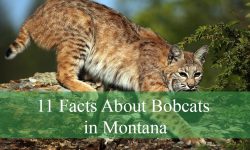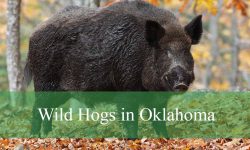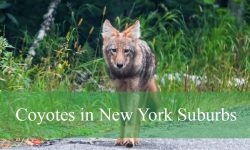Red foxes are some of the most recognizable animals in Colorado, yet much of their daily life happens out of sight. They slip through foothills, weave across open valleys, and move through mountain meadows with a quiet confidence, often passing near neighborhoods without drawing attention. Their red coats stand out in the light, but most of what defines them unfolds quietly, shaped by instinct, changing seasons, and the movements of prey across Colorado’s varied landscapes.
Red foxes have lived in Colorado’s wild spaces for generations, yet many of their most interesting traits often go unnoticed. Their behavior shifts subtly with the seasons, the landscape, and the availability of prey, creating patterns that are easy to miss unless you pay close attention. As they travel across foothills, meadows, forests, and quiet residential corridors, these foxes reveal a mix of adaptability and instinct that helps them thrive in Colorado’s constantly changing environments.
1. Colorado Red Foxes Thrive in an Astonishing Range of Habitats

They occupy elevations from plains to alpine forests
Red foxes in Colorado use an impressive range of landscapes, stretching from warm grasslands to cool mid-mountain forests and even the edges of alpine zones. Their ability to shift between these environments gives them steady access to prey and protective cover throughout the year. They often adjust elevation with the seasons, following snowmelt and the gradual movement of small mammals.
Many individuals prefer mixed woodlands where scattered shrubs, open patches, and clusters of trees create a balance of visibility and shelter. These areas offer ideal conditions for hunting, allowing foxes to stalk rodents in the open before slipping into thicker cover to rest. The varied terrain also provides numerous denning opportunities when pups are raised in spring.
Their presence in semi-urban areas has also grown more noticeable. Foxes frequently move along greenbelts, drainage corridors, and quiet neighborhood edges where insects, rodents, and fallen fruit are abundant. These human-modified environments offer easy food sources without forcing foxes to interact closely with people, helping them remain widespread even as Colorado’s suburbs continue to expand.
Habitat selection shifts with prey demands
Foxes choose their hunting grounds based largely on prey availability, and seasonal changes influence this pattern. In spring and summer, they forage heavily in grassy meadows where voles, young rabbits, and ground-nesting birds are especially active. These open fields allow quick, efficient hunting with minimal effort.
As colder months approach, their focus shifts toward denser woodland edges. Under snowpack or fallen leaves, rodents stay active in protected tunnels, making these areas reliable winter feeding sites. Forest cover also shields foxes from harsh winds and provides safer travel paths during storms.
These subtle, repeating movements reflect how closely foxes track Colorado’s changing climate. Even when remaining within the same home range, they rotate between microhabitats that best match seasonal prey patterns. This adaptability is key to their survival in a state known for rapid temperature swings and unpredictable weather.
2. Their Diet Is More Varied Than Most People Realize
They are opportunistic feeders with flexible habits
Red foxes in Colorado are true opportunistic omnivores, adjusting their diet based on what the landscape offers at any given moment. Small mammals remain their primary food source, but they readily shift to berries, insects, carrion, bird eggs, and even fallen fruit when rodents become scarce. This flexibility allows them to stay active year-round, even in places where seasons change abruptly.
In farming regions, foxes often take advantage of spilled grain, insects feeding on crops, or rodents drawn to barns and feed storage areas. Their presence can help reduce pest populations naturally, although occasional conflict arises when they target unprotected chickens or open compost bins. These encounters highlight how foxes blend wild instincts with opportunities found in human-modified environments.
Overall, their broad diet reflects the diversity of Colorado’s ecosystems. Whether hunting in high mountain valleys or scavenging along suburban edges, foxes adjust quickly to whatever is available. This dietary adaptability is one of the main reasons they remain common across such a wide range of habitats.
Seasonal abundance influences feeding strategies
When warm weather arrives, foxes broaden their diet to include beetles, grasshoppers, and seasonal fruits. These foods supply quick energy during active breeding months and help adults sustain long hours of pup-rearing. The influx of young prey in spring also provides easy meals that support rapid growth for developing families.
As winter approaches, feeding strategies shift. Foxes rely more heavily on rodents, using their acute hearing to detect movements beneath snow. This hunting method requires precision, but the payoff is essential when other food sources disappear. Winter prey may be harder to catch, but it provides the protein and fat needed to endure cold nights.
Even within a single home range, a fox may rotate between feeding sites depending on what each season provides. This pattern reflects how strongly their diet is shaped by Colorado’s climate cycles, especially in high-elevation areas where conditions change rapidly.
3. Colorado Red Foxes Have Highly Developed Hearing
They detect prey hidden beneath snow or soil
One of the red fox’s most impressive traits is the sensitivity of its hearing. Foxes can detect faint rustling sounds made by rodents moving under snowpack or tunneling beneath soil. This ability becomes especially valuable during winter when prey is concealed and visual cues are limited. Their method of locating prey relies almost entirely on sound rather than sight.
The iconic hunting leap—where a fox arcs into the air before landing sharply onto a hidden target—depends on precise sound triangulation. By adjusting their head angle and ears, foxes pinpoint the exact location of movement beneath the surface. This level of accuracy allows them to catch prey efficiently even in open areas where snow blankets the ground.
Observers often note that foxes will pause, tilt their heads, and listen carefully before launching an attack. These moments reveal how critical hearing is to their survival during colder months and how deeply their hunting behavior is tied to Colorado’s snowy landscapes.
Hearing also plays a role in communication
Foxes communicate using a surprisingly wide range of vocalizations, many of which travel long distances across open terrain. These calls include sharp barks, high-pitched screams, soft whines, and repeated yips. Each sound carries a different meaning, helping foxes maintain contact, warn rivals, or signal danger.
During the breeding season, vocal activity increases noticeably. Males use distinctive calls to announce their presence and challenge other foxes, while females produce softer tones that help coordinate movements around den sites. These sounds help strengthen pair bonds and guide pups as they learn to navigate their surroundings.
Communication is especially important in Colorado’s foothills and valleys, where foxes may be widely spread out. Their ability to send messages over long distances helps maintain family stability and reduces direct conflict among territorial neighbors.
4. Red Foxes Maintain Complex Family Structures
They form monogamous breeding pairs during the season
During the breeding season, red foxes typically form monogamous pairs that cooperate closely in raising their young. The female stays near the den during the early weeks of pup development, while the male focuses on providing steady food supplies. This shared responsibility helps pups survive in environments where weather and prey availability can shift suddenly.
As the pups grow, both parents take part in teaching them essential skills. These lessons often occur near the den entrance, where young foxes practice pouncing, climbing, and following scent trails. Parents demonstrate hunting techniques by bringing back live prey, allowing pups to learn through observation and play.
Family groups remain intact through most of the summer. By late summer or early autumn, young foxes begin exploring farther from the den and eventually disperse to establish their own territories. This gradual separation helps reduce competition within the family’s range and promotes healthy population distribution across Colorado.
Dispersal shapes population movement
Dispersal is a crucial stage in a young fox’s life. Juveniles may travel several miles in search of a new home range, sometimes crossing ridges, river valleys, or forest boundaries before settling. These movements help spread genetic diversity throughout the state and allow foxes to take advantage of newly available habitats.
Some juveniles remain relatively close to their birth territory if prey remains abundant. Others travel much farther, especially in years when rodent populations decline or when nearby territories are already occupied. These long-distance movements allow foxes to find safer, quieter areas where they can establish stable ranges.
This natural dispersal pattern plays a key role in maintaining balanced populations across Colorado’s diverse ecosystems. It ensures that foxes continue to occupy both traditional habitats and newly emerging landscapes shaped by climate and land-use changes.
5. They Use Dens Only for Raising Young
Adult foxes rarely sleep inside dens after pup season
Many people assume foxes rely on dens throughout the year, but adults actually spend most of their time above ground once pups are weaned. Dens serve a very specific purpose during breeding season: providing a safe, warm space for newborn pups. After this period, foxes prefer resting in open but sheltered areas where they can quickly detect approaching threats.
Dens used during early spring often belong to other species. Foxes readily occupy abandoned burrows created by marmots, badgers, or ground squirrels. These structures offer ready-made chambers that require little modification, saving foxes from expending valuable energy on excavation.
After pups grow older and begin roaming outside, the family gradually reduces its reliance on the den. Adults start using shaded shrubs, grassy hollows, or rocky outcrops as resting spots. These locations give them wider visibility and quicker escape routes, which are essential for survival in open landscapes.
Multiple den sites increase survival
A fox family may rotate between several den sites, especially during the early weeks of pup-rearing. This strategy helps reduce the chance that predators will discover a specific location and also protects the family from sudden environmental threats such as flooding or human disturbance.
Secondary dens are usually smaller and less elaborate but still provide adequate shelter if the main den becomes unsafe. Foxes move pups carefully between sites, often under the cover of dusk or dawn when visibility is low.
This flexible denning strategy reveals how foxes balance safety with opportunity. By never relying on a single location for too long, they increase the likelihood that their pups survive despite the challenges of Colorado’s unpredictable conditions.
6. Colorado Red Foxes Often Appear More Colorful Than Those in Other Regions
Sun exposure and elevation influence coat shades
Colorado’s high-elevation sunlight contributes to enhanced coloration in many red foxes. Strong UV exposure can intensify pigment tones, making some individuals appear brighter or more saturated than foxes living in lower, shadier regions. This effect is especially noticeable during late summer when fur is sun-bleached and prey activity is high.
Seasonal shedding also affects coloration. Winter coats grow thicker, paler, and fluffier to insulate foxes from alpine cold. When spring arrives, foxes shed this dense layer, revealing sharper reds and coppery tones beneath. These seasonal transitions can make the same fox look dramatically different from month to month.
In addition to sunlight and season, elevation itself shapes fur density. Foxes living in mountain valleys often develop thicker guard hairs and underfur, creating a more vibrant, full appearance. Those in lower plains may show sleeker coats adapted to warmer temperatures and lighter vegetation cover.
Color morphs appear throughout the state
Red foxes occur naturally in several color morphs, including silver, cross, and marbled variations. These morphs appear unpredictably but add striking visual diversity to Colorado’s fox population. The cross morph, with its dark dorsal stripe and shoulder bar, is particularly eye-catching in mountain forests.
Morphs result from genetic variation rather than environmental conditions. Even within the same litter, pups may display different coat patterns or shades. This variety contributes to the appeal of observing red foxes in the wild, especially for wildlife photographers and naturalists.
Although most foxes retain the classic red coloration, the presence of multiple morphs demonstrates the species’ wide genetic range. This diversity helps fox populations adapt to changing landscapes, climates, and ecological pressures.
7. Their Interactions With Humans Are More Frequent Than Expected
Foxes adapt well to suburban areas
Red foxes have become increasingly common in suburban neighborhoods across Colorado. They take advantage of parks, golf courses, and backyard greenbelts that mimic natural hunting grounds. These areas often support abundant rodents, insects, and fruiting plants, giving foxes easy access to reliable food sources.
Human presence does not seem to deter them as much as it once did. Foxes remain cautious but have learned to navigate neighborhoods quietly, often traveling along fences, creeks, or landscaped paths at night. Their small size and agile movement help them blend into these human-modified settings with little notice.
These suburban habitats offer foxes a mix of shelter and opportunity. While conflicts occasionally occur—especially when unsecured poultry or pet food is available—most interactions remain indirect. The foxes simply take advantage of resources without seeking close contact with people.
Human activity shapes their behavior
In areas with heavier human activity, foxes tend to become more nocturnal. Nighttime travel reduces the risk of encounters with dogs, cars, or loud human movement. This shift allows foxes to maintain safe foraging routes while avoiding the busiest parts of the day.
Their foraging behavior may also change in suburban environments. Foxes might rely more on insects, dropped fruits, or rodents attracted to compost piles, adjusting their habits subtly based on what each neighborhood offers. These small adaptations help them thrive even in places that weren’t originally designed for wildlife.
Overall, their interactions with people reflect a combination of avoidance and opportunity. Foxes remain wild animals, but their ability to adjust behavior in response to human presence shows how well they can navigate modern landscapes.
8. Red Foxes Play an Important Ecological Role in Colorado
They control rodent populations naturally
Red foxes help stabilize Colorado’s ecosystems by keeping rodent populations in check. Their diet includes voles, mice, ground squirrels, and young rabbits—species that reproduce quickly and can cause damage to vegetation when left unchecked. By hunting these small mammals, foxes indirectly protect grasslands and reduce competition for native plant species.
Natural rodent control also benefits agricultural areas. Foxes limit the spread of rodent-borne diseases and help reduce damage to crops, stored grains, and irrigation systems. This ecological service becomes especially valuable during years when rodent populations spike.
Even in suburban environments, foxes play a role in reducing backyard pests. Their presence often corresponds with fewer voles and mice, which in turn decreases garden damage. This quiet influence highlights their understated contribution to local ecological balance.
They influence broader ecosystem health
Beyond hunting, foxes help maintain ecosystem structure through scavenging and seed dispersal. When they feed on carrion, they aid in nutrient recycling, returning organic matter to the soil and reducing the spread of decaying material. This activity supports cleaner, healthier habitats for other species.
When foxes consume berries and fruits, seeds pass through their digestive system and are deposited in new locations. This helps plants colonize new ground and improves genetic diversity across landscapes. Such simple movements have long-term impacts on vegetation patterns, especially in fragmented habitats.
Fox presence is often a sign of a functioning predator–prey dynamic. Their role in controlling pests, recycling nutrients, and dispersing seeds underscores how deeply they are woven into Colorado’s natural systems. Their quiet but consistent influence keeps ecosystems balanced from valleys to mountain foothills.
FAQs About Red Foxes in Colorado
Are red foxes common in Colorado?
Yes. They are widespread across grasslands, foothills, mountain forests, and even semi-urban areas.
Are red foxes dangerous to humans?
They are generally shy and avoid confrontation. Encounters rarely pose any risk.
What do red foxes eat in Colorado?
Their diet includes rodents, rabbits, insects, fruits, berries, and occasionally carrion.
Do red foxes live in dens year-round?
No. They mainly use dens for raising pups, not for everyday shelter.
Are foxes active during the day?
They are most active at dawn and dusk but may appear during the day in quiet areas.
How big are Colorado red foxes?
Adults typically weigh 8–15 pounds, though winter coats often make them appear larger.
Do Colorado foxes migrate?
No. They remain within established territories, though juveniles disperse to new areas.
Can red foxes live in urban neighborhoods?
Yes. They adapt readily to suburban environments with sufficient food and cover.
Final Thoughts
Red foxes add a quiet grace to Colorado’s wild and suburban landscapes. Their adaptability, intelligence, and complex behavior allow them to thrive across elevations and seasons. Whether hunting under fresh snow, raising pups in hillside dens, or slipping through neighborhood greenbelts, they remain a vital part of the state’s ecological fabric. Understanding their habits deepens appreciation for the wildlife that shares Colorado’s open spaces and mountain foothills.






